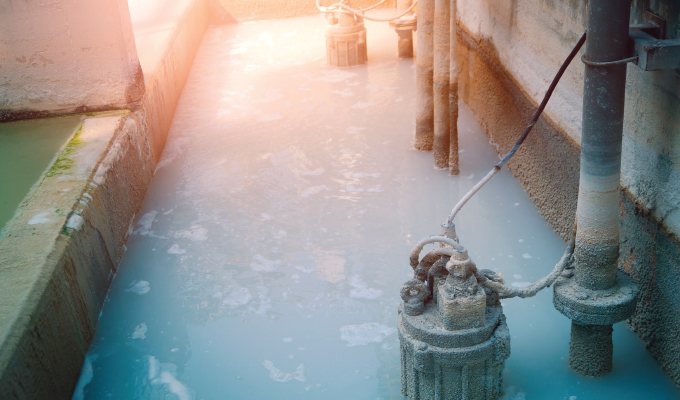By SWPA Executive Director Adam Stolberg and Lisa Riles, Xylem
When deciding on the best pump for an application, it’s important to consider not only the initial investment but also the relevant maintenance and efficiency costs over the pump’s life-cycle. Critics sometimes point out that, because dry-pit pumps are not in a wet well, they are easier to access for inspection and service. However, in the conversation below, SWPA Executive Director Adam Stolberg and Lisa Riles, product management director for Xylem’s Applied Water Systems, discuss how submersible pumps provide long-term benefits and savings that pump users need to factor into their purchasing choice.
What are some of the basic reasons one would choose a submersible pump over a dry-pit pump?
A submersible pump is not visible to the public, essentially the equipment is out of sight and out of mind, which would fall in favor of local authorities trying to integrate infrastructure that does not disturb its residents. Most importantly, submersible pumps are part of a large network on flood-proof pump stations that has drastically increased over the years to keep the equipment in operation while encountering unpredictable weather events.
What are the maintenance advantages of a submersible pump that some users may not be aware of?
Submersible wet-pit pumps are maintained through lifting means whether it’s a deep lift or chain system. The maintenance required is very minimal, especially with impeller technology designed to pass modern day rags at the same time maintain efficiency. Dry-pit submersible pumps on the other hand can be maintained in the same methods applied for the above mentioned dry-well pumps with the added benefit of not worrying about misalignment or added work that would be necessary on an extended shaft pump.
Being submersed in a wet environment helps keep a submersible pump cool. How does that advantage translate to its performance and efficiency?
The motor cooling methods are vital in maintaining operating life of the equipment, whether choosing an integral media cooled drive, closed loop cooled, or external cooling. There are cases where a customer would opt to not have a cooling jacket surrounding the stator housing; however, in these cases operations needs to maintain water levels assuring the unit is constantly submerged. This step adds to the operation and maintenance protocol, which is why it’s recommended to choose a proper cooling method supplied from the factory. Close-loop cooling methods offer higher efficiency and are often compliant to IE3 standards. Lastly, being submerged also eliminates the need for suction piping and in turn avoiding losses incurred with their installation.
Which impediments in a dry-pit pump’s performance don’t affect submersibles?
The following impediments do not affect submersible pumps:
- Pump and motor shaft alignment, coupling, and coupling guard.
- Priming conventional pump must be considered (submersible pumps are already submerged/primed).
- Suction piping losses must be accounted for (no suction piping on submersible pumps).
- Mechanical seals typically required a secondary water source for flushing (cooling/lubrication); submersible pump mechanical seals do not require seal flush.
- Proper suction and discharge piping support and alignment are critical for dry-pit pumps. Submersible pumps are typically not “hard-piped” and they automatically connect to their mating discharge elbow by gravity, making pump installation, and removal fast and easy.
- Dry-pit pumps typically have stuffing boxes designed to accommodate mechanical seals from different manufacturers and styles, which requires a longer shaft overhang. Quality submersible pumps are designed with minimal shaft overhang, thus reducing shaft loads and resultant deflection (longer seal and bearing life).
What are some applications where a submersible pump would be exclusively the better option?
Every pump application less than 1,000 horsepower—all kidding aside, wastewater and stormwater are the most common applications where pump stations are constructed below grade as conveyance or routing of pumpage to collection systems and in turn treatment plants. Any location that is prone to flooding, coastal cities for instance. From a civil works standpoint if the pump station is a single wet well it’s designed for submersibles or a pre-fabricated lift station which contains valves, float sensors, controls, and additional appurtenances needed for successful operation. On retrofit stations, there are some additional steps needed possibly moving the discharge header to accommodate the dry-pit submersible option but these changes would be very minimal.
FOR MORE INFORMATION
The Submersible Wastewater Pump Association (SWPA) is a national trade association representing and serving the manufacturers of submersible pumps for municipal and industrial wastewater applications. Founded in 1976, the association’s primary focus is on industry guidelines, education, and promotion.Information on membership as well as technical resources, online training center, and links to SWPA’s own industry renowned publications can be found on the organization website. For more information, visit www.swpa.org.
MODERN PUMPING TODAY, July 2020
Did you enjoy this article?
Subscribe to the FREE Digital Edition of Modern Pumping Today Magazine!



